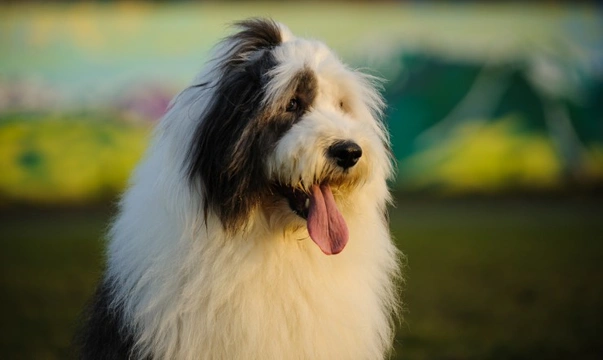
Hereditary ataxia (HA) DNA testing for the Old English sheepdog
The Old English sheepdog is a large, stocky and very hairy dog breed from the Kennel Club’s pastoral grouping, reflecting the breed’s long established history as a herding sheepdog and cattle herding dog within the UK.
This is one of our most well established and longest enduring native British dog breed, albeit one that is not hugely common in the streets and dog parks of the UK today. As a very large dog breed and one that has a lot of coat to contend with too, owning an Old English sheepdog can be quite time consuming, and this breed is also very energetic with bags of endurance, and needs plenty of exercise every day.
Old English sheepdogs are fairly intelligent, very affectionate and notable for being very good with children, and considering the fact that they are a large breed, have a reasonable lifespan too with an average of 10-12 years across the breed as a whole.
However, there are a number of hereditary health conditions that have become established within the breed over time, and some of these can be identified in breeding stock prior to mating by means of a DNA test that identifies the markers and risk factors for specific conditions. This can enable Old English sheepdog breeders to ensure that they make good mating matches that won’t pass on known hereditary health conditions to their subsequent litters.
One of these health conditions is hereditary ataxia (HA), which is a condition that causes neural degeneration and has a wide-reaching impact on affected dogs’ quality of life and longevity. However, a DNA test is available for hereditary ataxia in the Old English sheepdog, and if you are considering breeding from you own dog, it is very wise to get both your own dog and their mating match tested prior to mating.
In this article we will explain how Old English sheepdog hereditary ataxia affects dogs, how it is inherited, and how to get a DNA test for hereditary ataxia in Old English sheepdogs. Read on to learn more.
What is hereditary ataxia in the Old English sheepdog?
Hereditary ataxia in the Old English sheepdog is a specific type of ataxia that has been identified as being a risk within the breed and that is passed on due to a known gene fault present within some dogs of the breed. This is distinct from other forms of ataxia that may affect other dog breeds and be caused by different mutations or risk factors.
Ataxia is a term used to describe a collection of symptoms that affect the muscles, and which is a type of neurodegenerative disease. Hereditary ataxia affects the dog’s cerebellum, and is a progressive disease that begins in juvenile Old English sheepdogs and causes a strange or disturbed walking gait, loss of coordination in the muscle movements, and potentially, other problems too that are all apt to worsen over time.
This can have such a severe impact on the dog’s quality of life that a decision is sometimes made to euthanise the affected dog when the condition progresses to the stage at which their quality of life is no longer acceptable.
How can Old English sheepdogs inherit hereditary ataxia?
Old English sheepdog hereditary ataxia (HA) is transmitted from parent dogs to their young by means of autosomal recessive heredity, which means that the combined status of both parent dogs dictates the status of their offspring or theoretical offspring.
By DNA testing your Old English sheepdog for hereditary ataxia and having the other dog in the mating match tested too, you can work out what the odds are for any pup produced from the mating inheriting the condition themselves.
A dog can be either clear, a carrier of or affected by hereditary ataxia, and here’s how parental status dictates that of the pups:
- Two clear dogs can produce only clear pups.
- Two affected dogs can produce only affected pups.
- Two carrier dogs will produce odds of 50% for inheriting carrier status, 25% of inheriting affected status, and 25% of inheriting clear status for each pup in their litter.
- A clear dog bred to an affected dog will produce a litter of carriers.
- A clear dog bred to a carrier will produce pups with 50-50 odds of inheriting either clear or carrier status, but will not produce any affected pups.
- A carrier dog bred to an affected dog will produce pups with 50-50 odds of inheriting either carrier or affected status.
How to get an Old English sheepdog DNA tested for hereditary ataxia
If you are planning to breed from your Old English sheepdog and want to take all possible steps to ensure that the litter is healthy and free of hereditary ataxia, you will need to get them and the dog you intend to breed them with DNA tested to find out their status.
This is simple to arrange with your vet – you just need to make an appointment to have your vet take a DNA sample by means of a cheek swab or vial of blood. This will then be sent away to a laboratory that is approved to test for hereditary ataxia in the Old English sheepdog, and they will return a result of the status of each tested dog.



